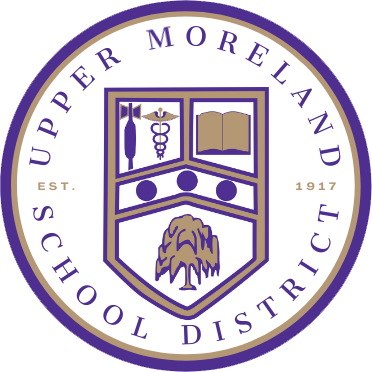Grade 10 - Grade 10 World History & Geography II
Planned Courses
Course: United States History – Industrialization to the End of World War II - grade 10
National Standards:
NCSS 1: Culture
NCSS 2: Time, Continuity, and Change
NCSS 3: People, Places and Environment
NCSS 4: Individual Development and Identity
NCSS 5: Individual Groups and Institutions
NCSS 6: Power, Authority and Governance
NCSS 7: Production, Distribution, and Consumption
NCSS 8: Science, Technology, and Society
NCSS 9: Global Connections
NCSS 10: Civic Ideals and Practices
PA Academic Standards:
History:
8.1 Historical Analysis and Skills Development
8.2 Pennsylvania History
8.3 United States History
8.4 World History
Geography:
7.1. Basic Geographic Literacy
7.2. Physical Characteristics of Places and Regions
7.3. Human Characteristics of Places and Regions
7.4. Interactions Between People and the Environment
Economics:
6.1. Scarcity and Choice
6.2. Markets and Economic Systems
6.3. Functions of Government
6.4. Economic Interdependence
6.5. Income, Profit, and Wealth
Civics and Government
5.1. Principles and Documents of Government
5.2. Rights and Responsibilities of Citizenship
5.3. How Government Works
5.4. How International Relationships Function
PA Core - Reading and Writing for History and Social Studies:
8.5 Reading Informational Text
8.6 Writing
Course Description:
The goal of the middle and high school social science program is to develop citizens who will be able to participate in a culturally diverse, democratic, global society. The social studies program provides an integrated study of history, civics, economics, geography, and related social science disciplines. The program emphasizes active learning strategies, research and inquiry skills, as well as critical thinking, reading, and writing that will transfer beyond the classroom. The development of skills and content knowledge from sixth to twelfth grade will allow students to apply what they have learned in a more practical and meaningful way.
This course focuses on world history from 1914 to the present. Students will examine unresolved conflicts of the world wars, shifts in global ideology, the rise of new independent nations, global modernization, violations of human rights, and today’s interdependent global society. The role of geography, economic developments, and governmental systems will be analyzed and evaluated as measures of increased global interaction. By identifying key concepts about culture, continuity and change, ideology, and the contributions of individuals and groups, students will be able to connect commonalities that have occurred globally during the 20th and 21st century.
Specific and measurable objectives to be obtained by students:
The specific objectives for this course are delineated in the Upper Moreland Township School District Social Studies Scope and Sequence based on the standards set forth in the National Curriculum Standards for Social Studies; A Framework for Teaching, Learning and Assessment 2010 published by the National Council for the Social Studies (NCSS) and Social Studies for the Next Generation; Purposes, Practices and Implications of the College, Career, and Civic Life (NCSS C3 Framework). Specific objectives are also listed in the corresponding Pennsylvania State Standards for History, Geography, Economics, and Government and the Pennsylvania Core Reading & Writing Standards for History and Social Studies.
Materials:
Text & Digital Resources:
Spielvogel, J. (2018). World History & Geography: Modern Times. Columbus, OH: McGraw-Hill Education.
Primary and Secondary source documents
Supplementary reading and media materials
Artifacts
Other Resources:
STAR. Renaissance Learning Inc. Wisconsin Rapids, WI. Web
Instructional Strategies:
In order to achieve the stated goals, the following best practice strategies will be utilized:
Big6 research process
effective questioning techniques that challenge students to expand their thinking
appropriate and effective use of 21st century resources and technology
resources that provide perspective on content-based learning
opportunity to exercise choice and responsibility by choosing topics of inquiry
constructing and interpreting claims and counterclaims using factual evidence and research
cooperative and collaborative opportunities for learning
thoughtful and respectful evaluation of cultural differentiation
application of key concepts to analyze the greater impact of social issues
opportunities to investigate topics in depth
opportunities to exercise choice and responsibility by choosing topics of inquiry
the exploration of open-ended questions that challenge thinking
web 2.0 collaborative technology
opportunities to develop reading and writing to learn skills
effective use of technology
Before, During, and After (BDA) activities
Estimated instructional time to be devoted to achieving objectives:
Approximately 86 minutes per day, on an alternating block schedule
Forms of assessments:
A variety of assessments will be used to measure student progress. These include:
Classroom discussions/participation
Debates with accompanying rubrics
Entrance and Exit slips
Homework
Independent research
Individual and group projects with performance based rubrics
Journals
Tests and quizzes
Common Unit Based Assessments given by all teachers
Oral presentations with accompanying rubrics
Quick write activities
Evidence based response to nonfiction text
An explanation of how student grades will be determined:
A student’s grade will be determined through a minimum of 7 assessments per marking period. A minimum of 3 different types of assessments will be used to determine the student’s grade.
